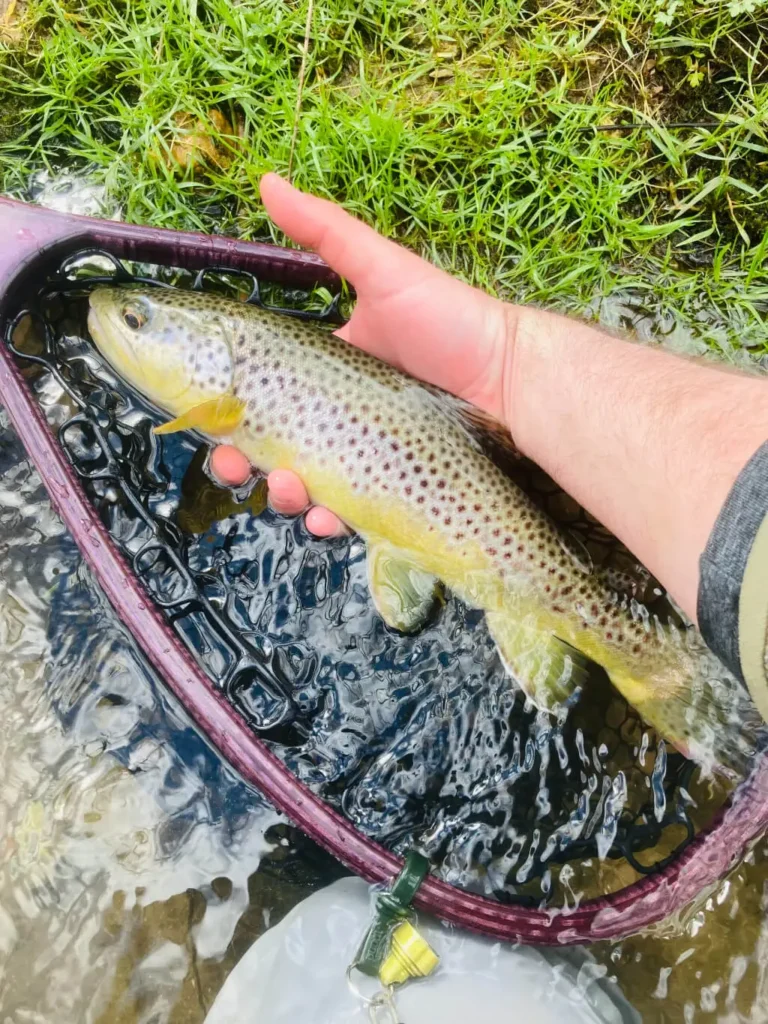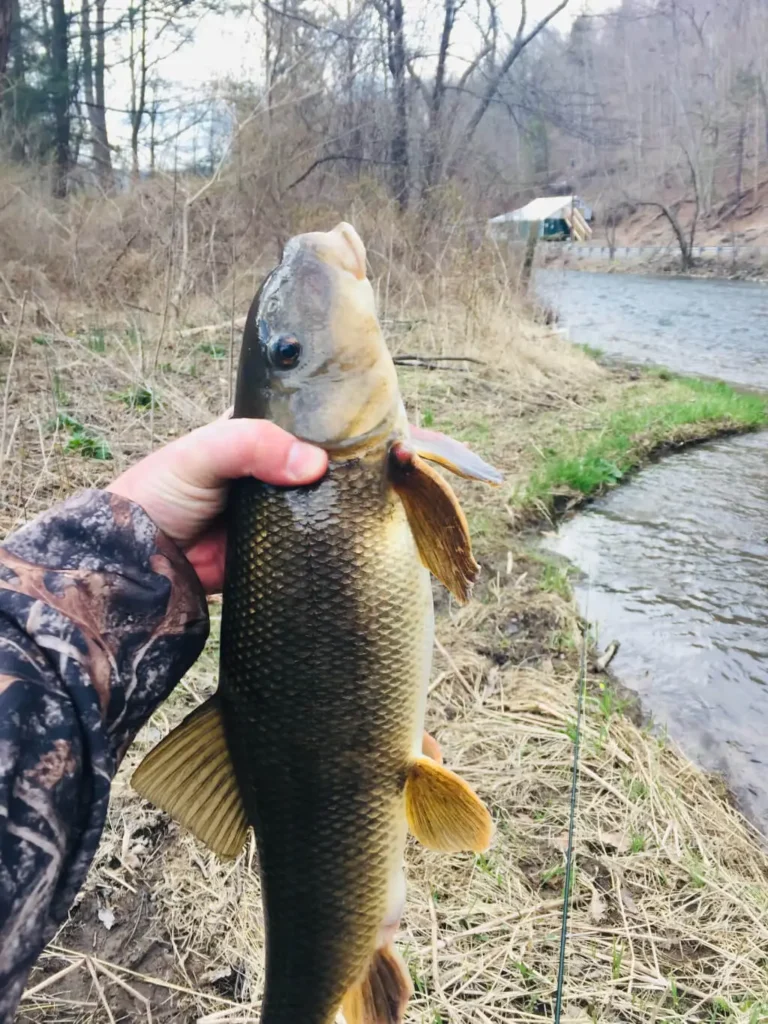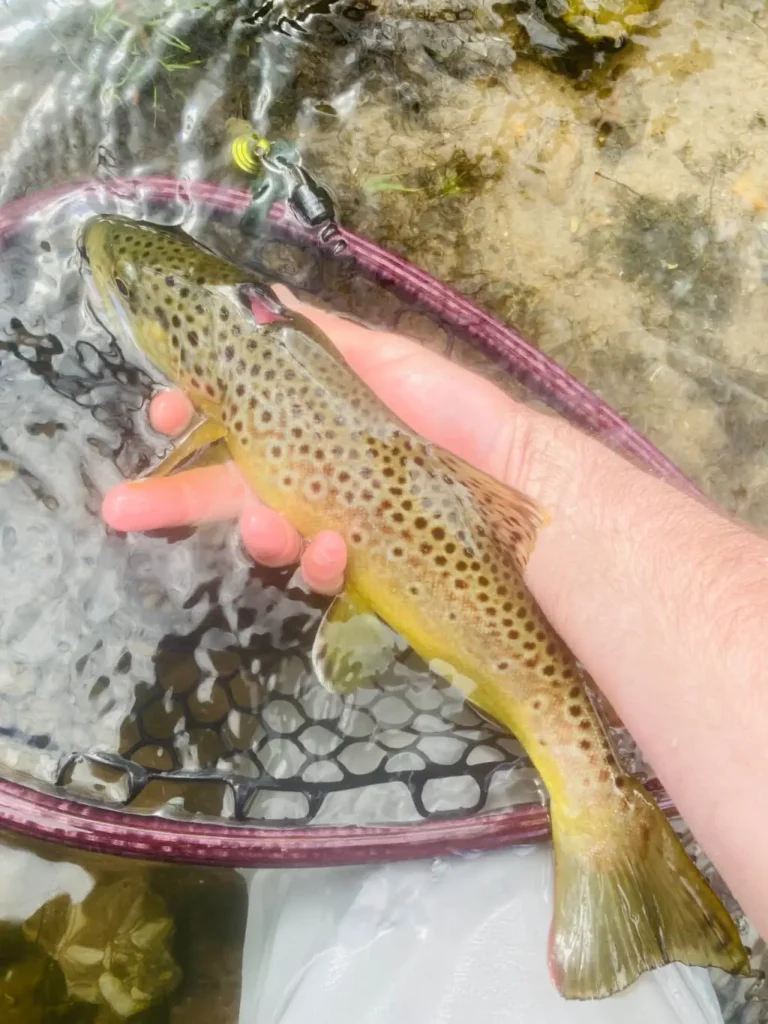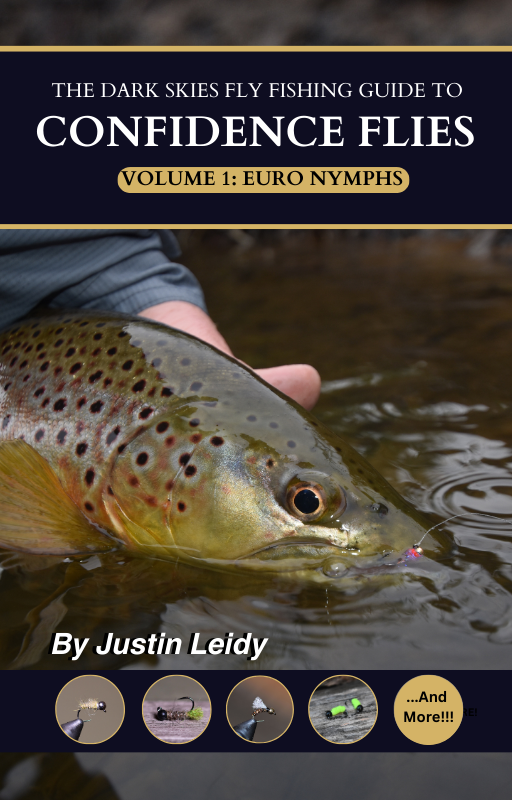Nymphing for Wild Trout During Central PA’s White Sucker Spawn

Despite harboring staggering numbers of wild trout, central Pennsylvania’s spring creeks foster some of the most challenging fish found anywhere in the country. To catch fish regularly on these creeks, fishermen must bring their A-game. After all, these trout are fished for 365 days of the year, every year, and they don’t tolerate sloppy presentations. Anglers must fish with confidence, skill, and deliberation. A faultless presentation and line control is crucial to fooling these fish regularly.
However, there are unique, natural events that cause these cagey brown trout to be far less cautious. One such event is the annual springtime spawn of the ubiquitous white sucker, which often turns these wary wild brown trout into catatonic, frenzied feeding zombies gorging themselves on high protein eggs!
The Sucker Spawn Experience
Earlier this spring, in mid-March, I made a weekend trip to a limestone stream in central Pennsylvania. Conditions were not ideal, but not terrible either. The water was high and on the brink of too much color. The deeper runs and shallower riffles were not necessarily raging but running very fast for this shallow gradient stream. To top off the difficult water conditions, the wind was steadily blowing at 15 mph with 25 mph gusts, and the air temperature was cold. I caught fish but needed to work my tail off and earn every one of them. Exactly what I had expected on this waterway.
By Sunday, conditions improved. Water levels dropped several cubic-feet-per second and the color changed over to that brilliant limestone green in the deeper runs and pools. Yes, the high sky was bluebird color and the stiff breeze didn’t help, but conditions were improved. I began my day fishing the edge of a deep run, followed by a long shallow riffle and topping out at a second shallower run. After fishing for several hours through this beat, I picked up a dozen trout and was feeling confident that I was on the brink of a good day of fishing! As my feet became cold, I decided to walk this same few hundred yards back downstream and do this all over again before heading home. And my oh my, I was grateful that I did!
Coming up to the tail of a riffle near the bottom of my self-prescribed beat, I noticed busy, nervous water upstream accompanied with splashing. Wading closer, I discovered a pod of large suckers spawning in 10-12” of water side by side, rolling and tangling, with their tails and backs breaking the surface. Peering closer, I also discovered dozens of brown trout amongst and below the suckers jockeying for better positions to intercept the eggs and milt. It was an absolute spectacle of Mother Nature, and I was briefly mesmerized simply watching the event.
Snapping from my trance, I quickly switched to a fluorescent peach-colored Eggstasy Egg. For the better part of two hours, I hooked up with a fish in this riffle nearly every cast. This was my second time experiencing the sucker spawn on this limestone creek, and the fishing was fast and furious each time. The only reason I did not catch more fish during this period was because I had to land the ones that I hooked before tying into another! Some were far bigger than average fish for this creek and I needed to chase them downstream and then carefully wade back into position upon releasing them.
At one point, I slightly adjusted my angle of approach and took a careful and small step up and across stream. As I did, my egg pattern was dabbing in the lip of the riffle just above when suddenly a nice brown trout shot downstream and crushed it just above the water’s surface! Nuts! Another moment, I missed a quick take at the top of my drift and the fish shook off the poor hookset. Yet, I decided to fish out the drift. I watched what ended up being a far better 16-inch brown trout bolt from amongst the suckers, chase down my egg pattern, and inhale it. Fish on! Bananas!
And then, just as quickly as the spawning suckers began their ritual of procreating, they ended. Just like that I watched the suckers separate, turn around, and slowly disperse. The brown trout followed suit. I picked up a few more stragglers on the egg pattern in the deeper water just upstream, but the feeding frenzy was over.
For two hours I had gorged myself on non-stop action as much as my fishy counterparts had gorged themselves on sucker spawn. I clipped off my egg pattern, reeled in my leader, and headed for home with an indefinite smile plastered to my face.
About the White Sucker
Making the claim that the white sucker is a beautiful creature is a stretch. This homely species can only be described as flat-out ugly with their large, olive-brown, yellowish and silvery scales, slimy exterior, odd downturned fleshy mouth and lumpy head. But for what this native fish lacks in beauty, it makes up for in intrigue. Suckers are not only an interesting species but a vital component of a healthy stream ecosystem. Sucker eggs and milt are very important early spring food sources for varieties of other fish, including wild trout.
The white sucker is common in clear headwater streams, larger rivers, and even stillwaters. They can be found in rocky, swift stream riffles to slow weed-choked pools and ponds. This species is an inhabitant throughout this region and ranges from northern Canada to Florida and west across the Great Plains.
White suckers are perfectly adapted to life on the bottom, feeding on both plant and animal food items. They probe and root through the substrate eating zooplankton, algae, aquatic weeds and insects, crustaceans, and mollusks.
According to the Pennsylvania Fish and Boat Comission’s ebook, Pennsylvania Fishes, white suckers can grow quite large, upwards of 25 inches and five pounds. Their large pectoral fins allow them to navigate deftly across the stream bottom and their forked tails make them powerful swimmers. Any angler that has stuck one of these large fish surely understands that they put a significant bend in the fishing rod…for a little bit, at least. Stamina is not the white sucker’s forte.
I once observed an ill-informed and unethical fisherman removing a sucker from his line and chucking it into the weeds to die. Never do this, for several species of suckers are necessary, native fish species that demand respect and admiration for the ecological niche they fill.
The PFBC explains that, “In spring, when water temperatures reach about 50 degrees, white suckers make their spawning runs, or migrations. They sometimes enter small gravel-bottomed streams by the thousands. The fish may home in on spawning sites they have visited before. The fish spawn from early May to early June, which has given the white sucker one of its nicknames, “June sucker.” In lakes, they spawn along the edges or on shallow shoals, over gravel.”
During spawning, in shallow water where the fishes’ backs, fins and tails are sometimes exposed, two or more males spawn with a single female. They press and twist against each other, and the female releases tens of thousands of eggs. The males release milt, i.e. sperm, simultaneously, and bumping and rolling along in the current, the eggs are fertilized where they settle and adhere to the gravel to develop. This is called broadcast spawning. This activity is a ringing dinner bell to resident trout that show up in tremendous numbers to feed on the nutrient-rich diet after the harsher and leaner times of winter.
Tactics for Fishing the Spawn

I prefer to use Euro nymphing tactics when fishing the sucker spawn because, well, this is my preferred method to fish. Nevertheless, indicator tactics with conventional fly fishing gear can be used with equal success.
To fish the spawn, I cut a single length of 6X or 7X fluorocarbon tippet down to about 3-4 feet in length. My favorite pattern is a fluorescent peach Eggstasy Egg (although I have read that egg patterns in yellow and cheese colors also work) tied on a #14 shrimp hook with a bright orange bead head in size 7/64. Natural sucker eggs and milt are a pale, golden yellow.
The traditional Sucker Spawn fly is tied by creating concentric loops of gold sparkle yarn along the top of a hook shank. A bright orange thread underbody can be used to imitate egg yolk or blood dots, but this is not necessary. This pattern works very well when trout are feeding on sucker spawn as well.
When spawning suckers are observed, carefully and deliberately wade towards them from a downstream position. Remember, this activity is likely happening in very shallow water and suckers are also wild fish with natural predators making them cagey and spooky, too. Interfering with their spawning will certainly blow them out of the spawning riffle, along with the trout. Plus, these suckers are in the act of producing new generations of this wonderful species, so respect that and do your best not to interfere with Mother Nature.
The first approach I use, the one I find to be most effective, is placing the egg pattern just behind the spawning suckers. Really be ready because most often a good trout will hammer the fly the moment it hits the water.
Second, place a delicate cast a bit upstream of the spawning suckers, not too close to scare them, and use the rod tip and line hand to guide the fly to the right or left of these fish, being very careful not to foul hook one. Be ready because I have found that the moment the fly makes the turn around the suckers, bam, a brown trout slams my artificial with an aggressive take!
Lastly, and my favorite approach to fishing the sucker spawn, is to slow down and carefully observe the feeding trout. I will search for a specific and large trout to target. Once this fish is identified, make a cast to set up an intended drift to this individual. Sight nymphing is an absolute rush because, like dry fly fishing, the eats can be observed. When you see your target fish’s white mouth open and red gills flair, set the hook! Often, when sight nymphing during the sucker spawn, I never catch my target fish because another one has eaten my fly before I could even present to it. I’m not complaining!
The final suggestion when fishing for trout amongst spawning suckers is the moment a fish is hooked, wrangle it quickly away and downstream out of the riffle. Having a hooked fish thrashing around may disrupt the spawning and feeding, ending the event. This being explained, I have found that trout, feeding or hooked, do not seem to bother the suckers at all, but it’s always better to be safe than sorry.
White Sucker Secrets

Fishing for wild brown trout feeding on sucker spawn really does seem too good to be true. And it kind of is. Foremost, these remarkably challenging fish suddenly become easier to catch, which creates a false sense of reality. Second, the sucker spawn is so unpredictable and isolated that stumbling upon this event is absolute happenstance. Suckers might be actively spawning in one riffle on a stream but not necessarily everywhere on the same waterway.
Also, the sucker spawn is conditional to water temperatures and stream flows. This means that if suckers spawned last year on March 24th, they may not be spawning this year in the same place on March 24th. The timing of the event can greatly vary from year to year. However, they do often spawn in the same locations year after year, so when you find spawning white suckers and aggressively feeding trout, commit this location to memory. Record the details of the event in your fishing notes or journal for future reference. And then, for Pete’s sake, keep it to yourself! When sucker spawning conditions seem favorable, return to this riffle consecutive seasons and hope to discover your old and faithful friends at it again. Spawning suckers never, ever disappoint.

Did You Enjoy This Article?
Stay up to date with the Dark Skies Fly Fishing monthly newsletter for free and receive the latest posts in fly fishing news, tricks, tips, and techniques, stream reports, as well as updates on new flies added to the Online Store and exclusive discounts!
Sign Up NowDownload our eBook "Confidence Flies: Volume One, Euro Nymphs" for free today when you sign up for our newsletter!
Have a fly fishing question you’d like answered? Drop us a line at info@darkskskiesflyfishing.com! If we use your question in a blog post or in the newsletter, we’ll send you a FREE fly box with a dozen of our favorite nymphs and dry flies!



Great article. Thanks for sharing
Thank you, Burch, for reading! Happy you enjoyed reading about this unique fishing experience. It was surely a wild ride! Let’s get you down to fish a central PA limestoner soon. These are such special waterways that I cherish.